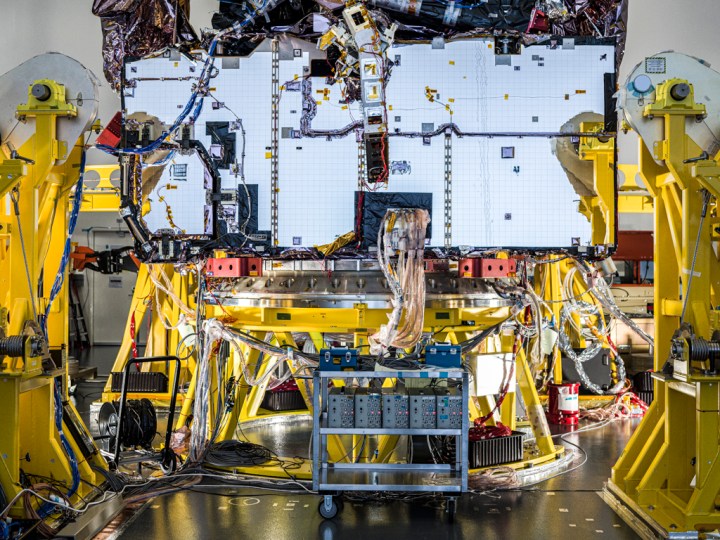
NASA’s successor to the Hubble Space Telescope, the James Webb Space Telescope, is inching closer to its launch date.
Last month, final functional performance tests on the telescope were completed in California. This included the comprehensive systems test which ensured that the internal electronics components of the telescope were working correctly. Data from a previous version of this test was compared with data after the launch environment test so that engineers could check that systems would continue to work after the challenging environment of a launch — which involves factors like extreme vibration, acceleration forces, and swings in temperature.
Another test, called the ground segment test, ensured that the spacecraft will be able to send and receive data from the ground. All four of the telescope’s instruments were able to send data to mission operations via NASA’s Deep Space Network.
With these tests complete, the telescope is almost ready for its launch in October this year.
“It’s been amazing to witness the level of expertise, commitment, and collaboration across the team during this important milestone,” said Jennifer Love-Pruitt, Northrop Grumman’s electrical vehicle engineering lead on the Webb observatory, in a statement. “It’s definitely a proud moment because we demonstrated Webb’s electrical readiness. The successful completion of this test also means we are ready to move forward toward launch and on-orbit operations.”
The project was delayed for seven months last year due to the pandemic, with work on the telescope having to be suspended when workers at NASA were sent home last March.
“Working in a pandemic environment, of course, is a challenge, and our team has been doing an excellent job working through its nuances. That’s a real positive to highlight, and it’s not just for this test but all of the tests we’ve safely completed leading up to this one,” said Bonnie Seaton, deputy ground segment & operations manager at Goddard. “This recent success is attributable to many months of preparation, the maturity of our systems, procedures, and products, and the proficiency of our team.”
Editors' Recommendations
- James Webb images capture the galactic winds of newborn stars
- See what James Webb and Hubble are observing right now with this tool
- How to watch SpaceX Crew-8 launch to the space station tonight
- NASA switches SpaceX’s Crew-8 launch date again
- See 19 gorgeous face-on spiral galaxies in new James Webb data




